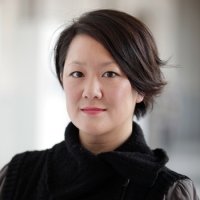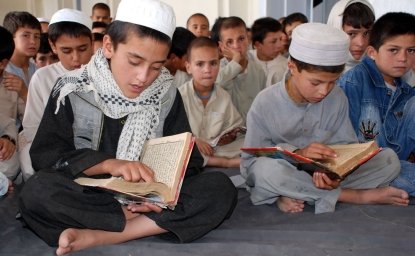
A blog of the Indo-Pacific Program
From a handshake on producing vaccines to promises to collaborate on filling gaps in the supply chain, President Biden and President Moon Jae-in of South Korea demonstrated with their summit last week just how productive two democracies can be when working collaboratively. But beyond partnership on trade and global health, perhaps the most important outcome of their first summit as leaders was the show of unity telegraphing to the world that the U.S.-South Korean alliance is not only intact but thriving.
In their joint press conference, both presidents stressed the close coordination between Seoul and Washington on a range of issues. That strategic show of unity was deft in conveying strength, commitment and promise to multiple audiences — not only in the South Korea and United States but also nations in the broader Indo-Pacific. And it also was designed to reach two key adversaries: North Korea and China, giving us insight into how the the Biden Administration intends to utilize the rebuilding of alliances in its foreign policy strategy, starting with South Korea and Japan.
This summit allowed President Moon to show Kim Jong Un that he has President Biden’s ear.
On North Korea, both emphasized that the U.S. policy review was coordinated closely with Seoul, and that the allies would continue to ensure that their approaches are in sync. This summit allowed President Moon to show Kim Jong Un that he has President Biden’s ear. We’re already starting to see signals from the Biden Administration that show they are listening to the South Koreans. These signals are designed to prevent North Korean provocation and to encourage engagement.
To highlight their coordination, the presidents announced that Amb. Sung Kim – a former U.S. ambassador to South Korea who currently serves as U.S. ambassador to Indonesia – would serve as U.S. special envoy for North Korea. Kim is a career diplomat with deep experience on North Korean negotiations during both the Obama and Trump administrations, and the announcement alone to fill this position should reassure the South Koreans — and perhaps the North Koreans — that North Korea is a foreign policy priority for the Biden Administration that will not be put on the back burner.
Use of the language adopted during the Singapore Summit of 2018 calling for the “complete denuclearization of the Korean Peninsula” was also designed to signal that the Biden Administration will not completely jettison Trump Administration policies on North Korea but move forward from diplomatic progress made in recent years. It is another strategic concession, given the complicated nature of the phrase, designed to appease Seoul and perhaps to entice Pyongyang.
However, how to handle North Korea will remain a challenge for Seoul and Washington. President Moon is far more committed to the promise of diplomacy with North Korea than President Biden. Unlike Moon’s past interest in multiple meetings with North Korean leader Kim Jong Un, President Biden has stated that such a summit would not happen unless Kim meets certain conditions. Indeed, the “calibrated, practical approach” to diplomacy described by the Biden administration is a far cry from the ambitious vision put forth by the Moon Administration that has included a declared end to the Korean War and a multi-decade, multi-billion dollar project for inter-Korean economic integration. While such differences can be papered over during a time when North Korea has been relatively quiet, future provocations by Pyongyang will stress test Washington’s and Seoul’s ability to stay in lock-step.
Barely mentioned during the Biden-Moon press conference was an agreement by Seoul and Washington to list U.S. restrictions on South Korean missile ranges that had previously limited South Korean missiles to a range of 800 kilometers. This is a win for all sides. For Moon, it achieved his party’s progressive objective to enhance South Korea’s sovereignty and his conservative opponents’ goal for more robust military capabilities. Yet it also reflected adjustments to U.S. strategy, which now are less concerned with the potentially disruptive effects of South Korea’s missile capabilities (especially in the face of North Korea’s progress in this area), and are more concerned with presenting China’s military planners with a more complex and challenging security environment.
As the United States continues to shift its focus toward competing effectively with China, South Korea will be forced to reconcile the interests of its ally with fears of retaliation from Beijing.
China will remain a delicate issue for the allies to navigate. On Friday, the two presidents reinforced U.S. and South Korean commitment “to expanding cooperation and shaping our shared future in accordance with our democratic values that have made our nations strong and agile and highly competitive in the 21st century economies.” The language, particularly the emphasis on “democratic values,” could be seen as an oblique alignment against the rise and influence of China. As the United States continues to shift its focus toward competing effectively with China, South Korea will be forced to reconcile the interests of its ally with fears of retaliation from Beijing.
The presidents’ announcement of a raft of joint initiatives highlighted U.S. efforts to align allies in the mission to re-establish global leadership — and perhaps to counter China’s rise. That included pledges to strengthen cybersecurity, space, green energy, and cooperating to build an open and secure 5G network — an implicit comparison to China’s 5G initiative — as well as 6G technologies, and to jointly strengthen secure supply chains in the production of semiconductors, pharmaceuticals, and electric vehicle batteries. They also announced plans for the United States to provide vaccines to the South Korean armed forces and to establish a “KORUS Global Vaccine Partnership,” in which South Korea’s production capabilities would be supported by U.S. vaccine technologies to boost global vaccine supply.
The summit also coincided with the announcement that some of South Korea’s largest and most prominent corporations – including Samsung, Hyundai, SK, and LG – would make more than $25 billion of new investments in the United States. Indeed, Moon traveled to Georgia after the summit to visit a new SK electric vehicle battery production plant – which promises to bring at least 2,600 jobs and $2.6 billion to the Atlanta area. SK also announced jointly with Ford Motors plans to support a $5.3 billion joint venture to build two new battery plants in the United States, and Hyundai has announced plans to invest $7.4 billion into mobility initiatives including upgrades to facilities that will be producing electric vehicles.
For South Korea, it was a moment to step into a larger role on the global stage. Moon’s visit served as an opportunity for South Korea to show off its potential to play a leadership role in the global pandemic and for South Korean businesses to show they have the capability, commitment and vision to fill a gap in the supply chain.
Last week, we were reminded of the history of the US-South Korean alliance. With President Moon in the audience, President Biden awarded the Medal of Honor to the legendary Col. Ralph Puckett, Jr. – emphasizing the shared history of an alliance whose motto is “we go together.” The ceremony was not only a moving tale of heroism but also a vivid reminder of the shared history of war that underpins the relationship between South Korea and the United States. The moment served as a reminder that this conflict, the Korean War, remains unresolved, serving to reinforce the need to maintain readiness against potential aggression from its Korean War adversaries.
But I think we also saw in the summit a recognition of South Korea’s incredible growth since the devastation of the Korean War as well as the transformation of its role as a poor country in need to its position today as an advanced nation capable of giving back to the United States, and allies, in spades.
Highlighting South Korea’s growth and influence is a show of the power of an alliance with the United States and the result of investment in that relationship. South Korea can also serve as a role model for countless developing nations, particularly across Asia and the Indo-Pacific, seeking to make a similar economic transformation.
And that is a message that the Biden Administration will want to promote across the Indo-Pacific and beyond as part of the larger strategy to bring nations on board with the U.S. vision of democracy and global leadership.
Jean H. Lee is director of the Hyundai Motor-Korea Foundation Center for Korean History and Public Policy and co-host of the Lazarus Heist podcast on the BBC. Follow her on Twitter and Instagram @newsjean.
The views expressed are the author's alone, and do not represent the views of the U.S. Government or the Wilson Center. Copyright 2020, Asia Program. All rights reserved.
Author

Journalist and former Pyongyang Bureau Chief, Associated Press

Indo-Pacific Program
The Indo-Pacific Program promotes policy debate and intellectual discussions on US interests in the Asia-Pacific as well as political, economic, security, and social issues relating to the world’s most populous and economically dynamic region. Read more


Hyundai Motor-Korea Foundation Center for Korean History and Public Policy
The Center for Korean History and Public Policy was established in 2015 with the generous support of the Hyundai Motor Company and the Korea Foundation to provide a coherent, long-term platform for improving historical understanding of Korea and informing the public policy debate on the Korean peninsula in the United States and beyond. Read more





